Exploring the gut microbiome and serum metabolome interplay in non-functioning pituitary neuroendocrine tumors
- PMID: 40236482
- PMCID: PMC11997625
- DOI: 10.3389/fmicb.2025.1541683
Exploring the gut microbiome and serum metabolome interplay in non-functioning pituitary neuroendocrine tumors
Abstract
The gut microbiome has emerged as a potential factor in cancer pathogenesis, but its role in non-functioning pituitary neuroendocrine tumors (NF-PitNETs) remains unclear. This study aimed to elucidate gut microbiome and metabolomic alterations in NF-PitNETs by comparing microbial diversity, pathogenic bacteria, and serum metabolomic profiles between NF-PitNET patients and healthy controls. The gut microbiome was assessed through 16S rRNA sequencing, while serum metabolomics was analyzed using mass spectrometry. Correlation analyses identified potential links between microbial characteristics and metabolic markers. The results revealed that specific pathogenic bacteria, such as Bacteroides, were significantly enriched in NF-PitNET patients. Multi-omics correlations suggested that altered microbiota might contribute to NF-PitNET pathogenesis by modulating host metabolic pathways. These findings highlight the potential role of gut microbiome dysbiosis and its metabolic effects in NF-PitNET development, offering insights into possible therapeutic and diagnostic targets.
Keywords: NF-PitNETs; gut microbiota; microbiome-metabolome interactions; serum metabolomics; tumor aggressiveness.
Copyright © 2025 Liu, Ye, Zhang, Su, Liu, Chen, Shi, Liu, Lu, Cai, Zhong, Wang, Pu, Liu, Wei, Pan, Zhu, Deng, Wang, Lu, Hu and Yao.
Conflict of interest statement
The authors declare that the research was conducted in the absence of any commercial or financial relationships that could be construed as a potential conflict of interest.
Figures
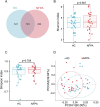
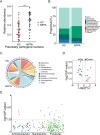
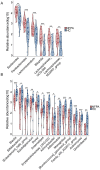
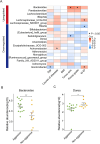
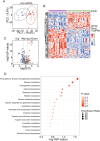


Similar articles
-
Gut Microbiome and Serum Metabolome Alterations Associated with Isolated Dystonia.mSphere. 2021 Aug 25;6(4):e0028321. doi: 10.1128/mSphere.00283-21. Epub 2021 Aug 4. mSphere. 2021. PMID: 34346706 Free PMC article.
-
Gut microbiome and metabolome profiling in coal workers' pneumoconiosis: potential links to pulmonary function.Microbiol Spectr. 2024 Nov 5;12(11):e0004924. doi: 10.1128/spectrum.00049-24. Epub 2024 Sep 16. Microbiol Spectr. 2024. PMID: 39283109 Free PMC article.
-
A specific gut microbiota and metabolomic profiles shifts related to antidiabetic action: The similar and complementary antidiabetic properties of type 3 resistant starch from Canna edulis and metformin.Pharmacol Res. 2020 Sep;159:104985. doi: 10.1016/j.phrs.2020.104985. Epub 2020 Jun 3. Pharmacol Res. 2020. PMID: 32504839
-
Muti-omics integration analysis revealed molecular network alterations in human nonfunctional pituitary neuroendocrine tumors in the framework of 3P medicine.EPMA J. 2022 Feb 17;13(1):9-37. doi: 10.1007/s13167-022-00274-5. eCollection 2022 Mar. EPMA J. 2022. PMID: 35273657 Free PMC article. Review.
-
PitNETs and the gut microbiota: potential connections, future directions.Front Endocrinol (Lausanne). 2023 Nov 6;14:1255911. doi: 10.3389/fendo.2023.1255911. eCollection 2023. Front Endocrinol (Lausanne). 2023. PMID: 38027221 Free PMC article. Review.
References
LinkOut - more resources
Full Text Sources

